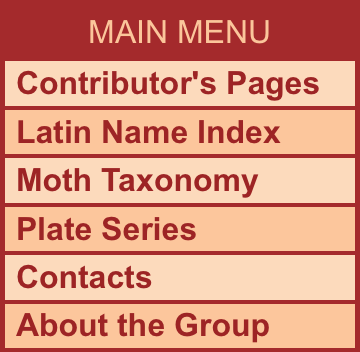Dick Wilson's Moths from Bay Center, Washington


 Dick has spent many decades observing, photographing and documenting marine and terrestrial animal groups ranging from fossil vertebrates to living marine and nearshore invertebrates. He is not an entomologist but was a university geology professor with interest in various animal groups both past and present.
Dick has spent many decades observing, photographing and documenting marine and terrestrial animal groups ranging from fossil vertebrates to living marine and nearshore invertebrates. He is not an entomologist but was a university geology professor with interest in various animal groups both past and present.
 Bay Center is a coastal area in southwest Washington State and has a very mild temperate climate with ample rain.
This results in an exceptional array of different botanical types. Extensive saltwater marshes with herbaceous plants and grasses border the many creeks and streams flowing into the Willapa estuary. With elevation the saltwater marsh areas grade into various deciduous trees such as alder, willow and maple and many non-woody plants. The thick growth of conifers mix with the deciduous trees with spruce and cedar nearer the water edge and others such as fir and hemlock dominate as elevation changes. Areas that were clear cut initially are the habitat for numerous smaller vegetational types with the trees eventually taking over. With the diverse and abundant vegetation he was not surprised by the numerous moths that would gather around the outside night lights at his home.
Bay Center is a coastal area in southwest Washington State and has a very mild temperate climate with ample rain.
This results in an exceptional array of different botanical types. Extensive saltwater marshes with herbaceous plants and grasses border the many creeks and streams flowing into the Willapa estuary. With elevation the saltwater marsh areas grade into various deciduous trees such as alder, willow and maple and many non-woody plants. The thick growth of conifers mix with the deciduous trees with spruce and cedar nearer the water edge and others such as fir and hemlock dominate as elevation changes. Areas that were clear cut initially are the habitat for numerous smaller vegetational types with the trees eventually taking over. With the diverse and abundant vegetation he was not surprised by the numerous moths that would gather around the outside night lights at his home.
 This prompted him to start photographing and keeping records and returning the live moths back outdoors. It was not long until thousands of moth images and data were organized by utilizing his Flickr photo site, which
This prompted him to start photographing and keeping records and returning the live moths back outdoors. It was not long until thousands of moth images and data were organized by utilizing his Flickr photo site, which
 has expanded to 28 albums for the 500 plus species from his backyard. It was this initial photo collection of moths, prior to 2009, that probably helped him receive free DNA testing for around 3,000 selected moth specimens with another ± 1,200 added in the last few years. The moths sent in and used for DNA testing have become part of the Barcode of Life Database (BOLD) and accessible to the public. Many of the images and DNA data are also available on BugGuide. Dick hopes the archived moths, their images and DNA data will prove useful to others interested in or working on this important lepidopteran group.
has expanded to 28 albums for the 500 plus species from his backyard. It was this initial photo collection of moths, prior to 2009, that probably helped him receive free DNA testing for around 3,000 selected moth specimens with another ± 1,200 added in the last few years. The moths sent in and used for DNA testing have become part of the Barcode of Life Database (BOLD) and accessible to the public. Many of the images and DNA data are also available on BugGuide. Dick hopes the archived moths, their images and DNA data will prove useful to others interested in or working on this important lepidopteran group.
All photographs © by Dick Wilson
|





